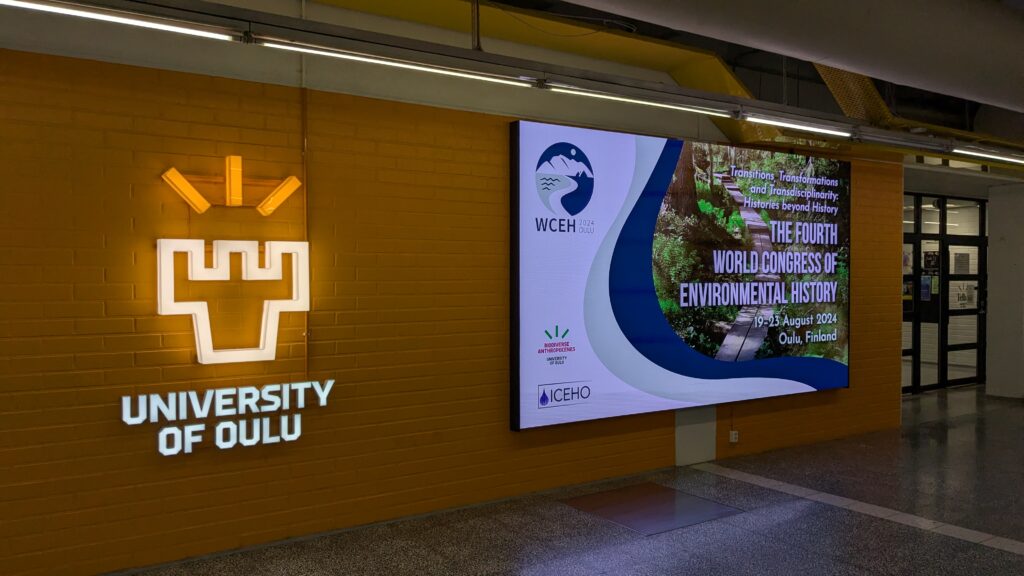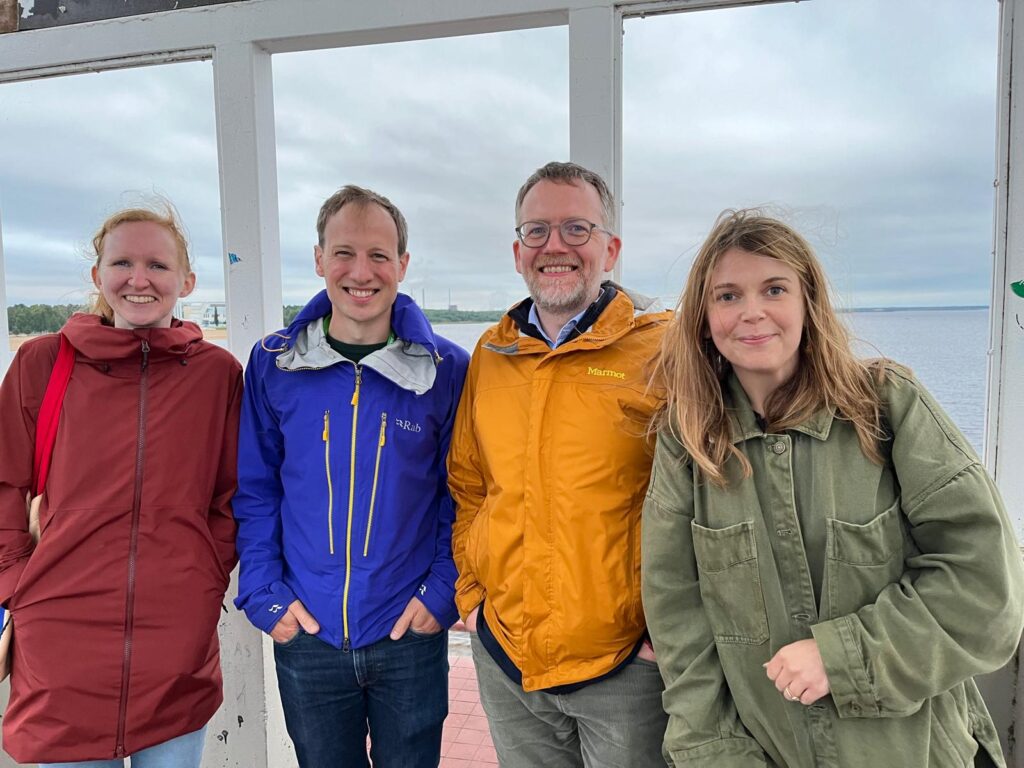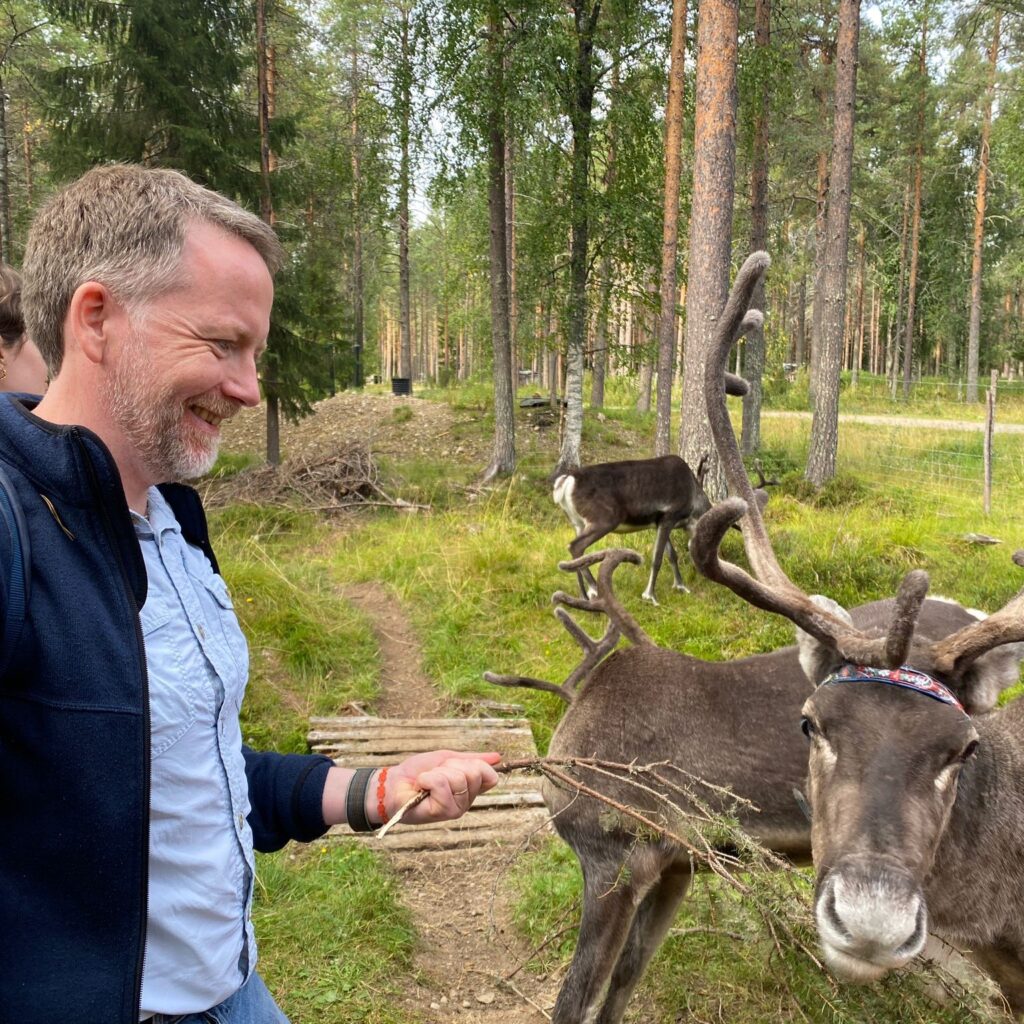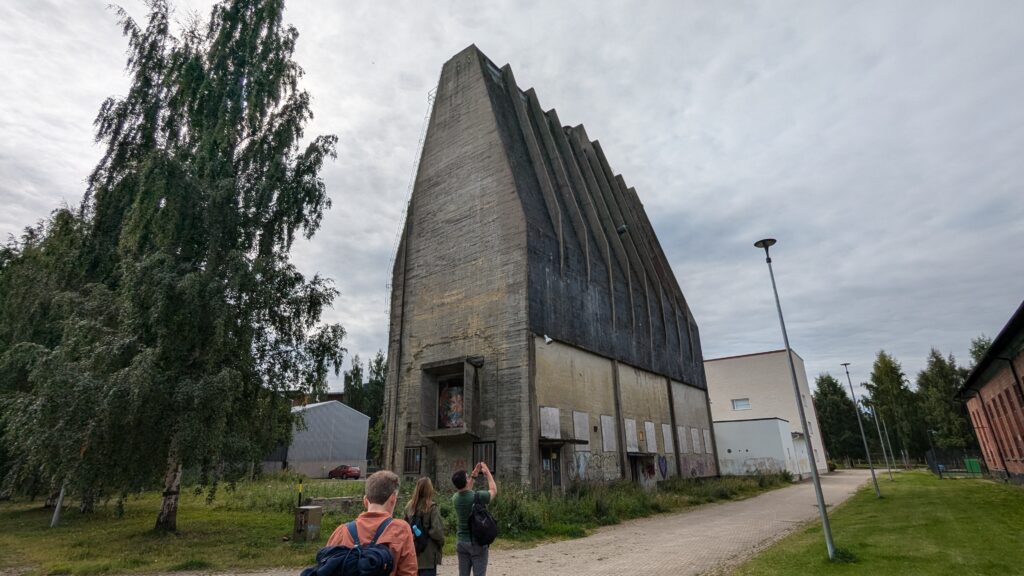The Sound of Nature project team presented at the World Congress of Environmental History (WCEH) in Oulu from 19-23 August 2024. With over 900 online and face-to-face participants from all over the world and more than 700 different panels, roundtables, workshops and poster sessions, the WCEH is the major event for scholars in environmental history and related disciplines.
With our participation, we aimed at opening the sources and insights of our research – the sounds of nature of the Long 19th Century in the UK and Germany – up to a broad international audience of researchers and to expand our SoN network beyond Europe. To our great delight, we received a large number of excellent applications for our panel The sound of nature: soundscapes and environmental awareness so that we were able to organise a double panel with 105 minutes per session and allow a total of 9 panelists.

In addition to the project participants Francesca Mackenney, Wilko Hardenberg and Anne Hehl, the scholars Fiona Amery (University of Cambridge), Amanda Blake Davis (University of Derby), Konstantine Vlasis (New York University), Alexandra Hui (Mississippi State University), Luregn Lenggenhager (University of Cologne) and Lydia Wagenknecht (University of Colorado Boulder) gave insights into their fascinating research on nature sounds.
The first session’s focus was on the dynamic relations between science/ knowledge about natural sound phenomena, their physical sensation and their “translation” into texts from literature, folklore and non-fiction of the 19th and early 20th century. Unifying element of the papers was the fact that natural sounds and their textual traces can become powerful carriers of meaning for individuals and collectives, especially in times of change and loss.
The second session addressed the role of textual nature sounds (and silence) in the early history of environmentalism as well as the stereotyping, functionalisation and displacement of nature through the editing/ staging and marketing of mechanical sound recordings (e.g. of the South-African bush) in the middle of the 20th century.
The two lively and inspiring discussions following the talks with a large and engaged audience in both panels showed us, once again, the importance of research and scholarly exchange on history of nature sounds in its various material, cultural and personal contexts. Even, and perhaps especially, in present times characterised by biodiversity loss and climate change the transforming and vanishing sounds of natural spaces remind us of our and our world’s fragility. (Re-) Discovering the manifold traces of nature’s sounds can open up new ways of understanding the crucial role that nature and its sounds and silence played and continue to play in the development of environmental awareness.

In addition to the wide range of panels and sessions, participants of the WCEH were given the opportunity to take part in numerous cultural activities in and around Oulu. Aside from the obligatory Finnish Sauna visit at the Koivurannan Saunalautta, members of our group also joined a trip to the reindeer farm Poro-Panuma in Pudasjärvi, where they learned about the history and cultural significance of the centuries-old tradition of reindeer herding.

Our group also got the chance to visit Aalto Siilo, a concrete silo built in 1932 as part of the Toppila cellulose factory. The factory eventually closed down in 1985, and while the other buildings could be repurposed, the silo was left to the birds and plants that started to inhabit it for almost 40 years. The building was protected by the Finnish government in the early 1990s. When Oulu was selected as European Capital of Culture of 2026 the restoration of the silo could finally be turned into a project. Current plans aim at turning Aalto Silo into a “symbol for the application of technology to the preservation of natural as well as cultural heritage”, as it is stated on the project’s homepage. We found that the silo’s fascination lied not only in its unquestionably beautiful and outstanding architecture, but also in its sonorous interior: through its cathedral-like shape the building extends and amplifies sounds as they are reflected by the concrete walls and we, the listeners, are constantly reminded of its presence, while we move through and are permeated by it.


